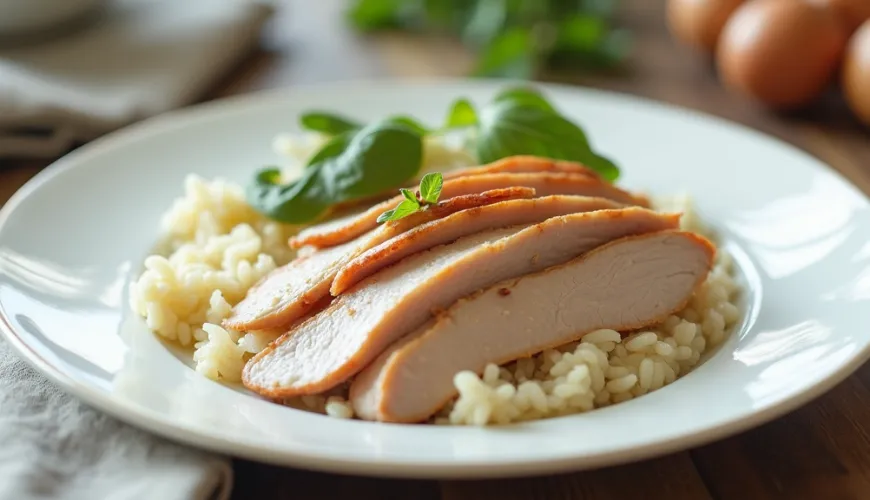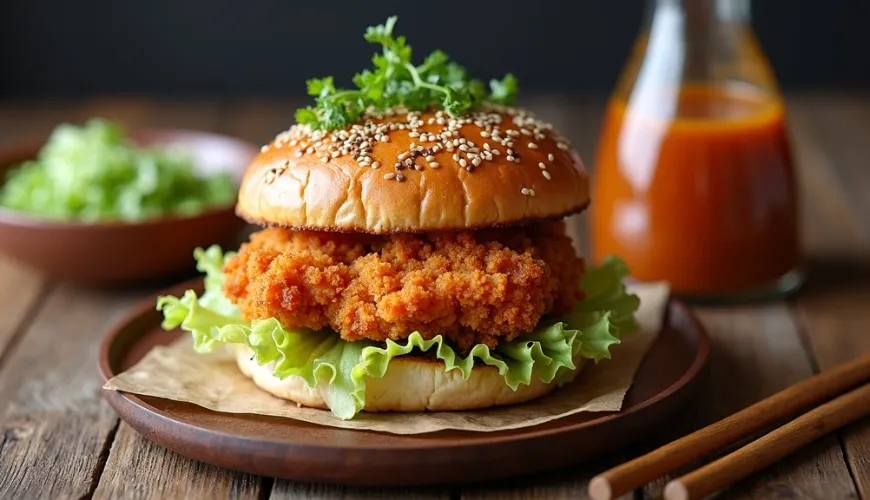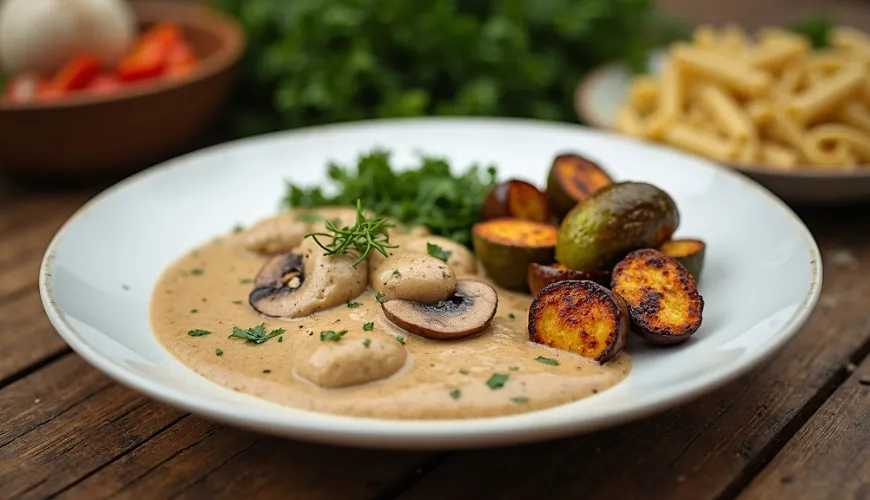
Discover Saving Diet No. 2 and Recipes for Light and Tasty Meals

Restorative Diet - When the Body Needs Calm and Lightness
Digestion is a process that most of us take for granted—until it starts to fail. Abdominal pain, bloating, loss of appetite, or nausea can signal that it's time to slow down and give the digestive tract a break. This is where the restorative diet, sometimes also called a gastric diet, comes into play. It’s not a trendy fad but a proven nutritional regimen that helps with stomach, intestinal issues, or post-surgery recovery.
This type of diet is not intended for weight loss but for the calming and regeneration of the digestive system. It is based on the principles of easily digestible and nutritionally complete meals that do not burden the body. Let's take a closer look at what a restorative diet entails and what specific recipes can help with stomach or intestinal problems.
What is a Restorative Diet and When to Implement It
A restorative diet is a nutritional regimen recommended for digestive disorders, inflammation of the stomach, duodenum, intestines, or after surgical procedures in the abdominal area. There are several types—most commonly, we encounter the so-called restorative diet no. 2 and no. 4, which are derived from dietary systems used in hospital settings. While diet number 2 is intended for patients with chronic inflammation of the stomach and intestines in a calm phase, diet no. 4 focuses more on acute intestinal conditions.
A key feature of all stomach and intestine-friendly diets is that they are mainly based on easy digestibility—meals should be such that they do not burden digestion while providing the body with everything it needs. At the same time, emphasis is placed on meals containing minimal fats and being only mildly or not at all spiced, as strong flavors often mean a greater burden on the digestive tract. Substances that can irritate the digestive mucosa are completely omitted—so no alcohol, coffee, carbonated drinks, or fried foods, which can be challenging for many, but the body usually appreciates it.
Gentle culinary preparations also play a significant role—instead of frying and grilling, preference is given to boiling, stewing, or baking without fat, which not only reduces the burden on the digestive system but often naturally decreases the energy value of the food. Overall, it is a style of eating that seeks to be as gentle as possible and avoid forcing the body into excessive digestion, which can be a pleasant reset not only for those with digestive issues but also for those who want to calm their diet for a while.
This does not mean that meals have to be bland and tasteless. Even within a restorative diet, it is possible to prepare tasty, varied, and colorful dishes that provide the body with the necessary nutrients while supporting its recovery.
How a Restorative Diet Menu Might Look
When creating a menu, it is important to consider not only gentleness but also sufficient energy and nutritional intake. In practice, this means using quality proteins (e.g., chicken, fish, boiled eggs), polysaccharides in the form of cooked rice, potatoes, or pasta, and plenty of vegetables—but in a soft, stewed, or pureed form.
A common misconception is that a restorative diet means tasteless food. In reality, it is about achieving harmony of gentleness and nutrition, which can be achieved through the right combination of ingredients and their preparation.
Inspirational Recipes for a Restorative Diet
In the following recipes, we focus on a variety of dishes that adhere to the principles of a restorative diet, whether it is variant no. 2 (for calming the stomach) or no. 4 (for sparing the intestines).
1. Carrot Soup with Potatoes
Light, nutritious, and very easily digestible. Suitable as the opening meal of the day.
Ingredients:
- 2 small carrots
- 1 potato
- 1 tablespoon butter
- a pinch of salt
Peel the carrot and potato, cut into small cubes, and cook in slightly salted water until soft. Finally, add a piece of butter and blend everything into a smooth cream. The soup is ideal for both stomach and intestinal issues.
2. Turkey with Rice Puree
Turkey meat is easily digestible and nutritious. Rice puree provides energy and fiber.
Ingredients:
- 100 g of turkey breast
- 1/2 cup of rice
- 1 teaspoon butter
- salt as needed
Boil the meat in water without seasoning and cut it into small pieces. Cook the rice until soft and blend with butter into a puree. Serve together. Excellent for children or seniors.
3. Apple Puree with Quark
A light dessert or afternoon snack. Apples contain pectin, which helps soothe the intestines.
Ingredients:
- 1 large sweet apple
- 2 tablespoons of semi-fat quark
- 1/2 teaspoon honey (optional)
Peel, grate, and briefly stew the apple. Let it cool and mix with the quark. If needed, add a drop of honey. This dish is ideal for a restorative intestine diet and for stomach issues.
4. Pumpkin Risotto
Pumpkin is gentle, nutritious, and perfect for healing an irritated digestive system.
Ingredients:
- 1/2 cup of round-grain rice
- 100 g hokkaido pumpkin
- 1 tablespoon olive oil
- a pinch of salt
Cut the pumpkin into cubes and stew in water until soft. Cook the rice separately and mix with the pumpkin and a bit of olive oil. A great lunch for days when the intestines need to be spared.
5. Steamed Cod Fillet with Mashed Potatoes
Fish meat is often recommended during a diet due to its high omega-3 fatty acid content and easy digestibility.
Ingredients:
- 100 g of cod
- 2 small potatoes
- 1 teaspoon butter
- dill (optional)
Briefly steam the cod with a little water, and salt it very lightly. Boil and mash the potatoes with butter. You can add a bit of chopped dill for aroma. The dish is light but nutritious.
How a Restorative Diet Can Help
Pavla, a young woman from Olomouc, struggled for several months with abdominal pain, chronic diarrhea, and fatigue. After examinations, doctors diagnosed her with inflammation of the small intestine and recommended rest and dietary adjustments. Pavla began searching for recipes suitable for a restorative diet and gradually compiled her own repertoire of meals—from light soups to vegetable purees and porridges. "I was surprised at how quickly I felt relief. I used to eat all sorts of things, but here I really had to prioritize. Today I know less is more—at least for my digestion," she says.
What to Watch Out For
Although a restorative diet acts as a universal solution, it may not suit everyone equally. It is important to listen to your body and possibly consult adjustments with a specialist. In some cases, it is necessary to temporarily exclude milk, high-fiber bread, or raw vegetables. Keeping a food diary, where you record what you ate and how you felt after eating, can be a helpful tool.
It is also advisable to maintain adequate hydration, ideally in the form of unsweetened tea or plain water. Avoid carbonated drinks, overly hot or cold foods, and snacks containing artificial additives.
As Hippocrates said: "Let food be your medicine, and medicine be your food." In times when digestion is weakened, a restorative diet is not only preventive but also a path to healing. And most importantly—it often calms not only the body but also the mind.

